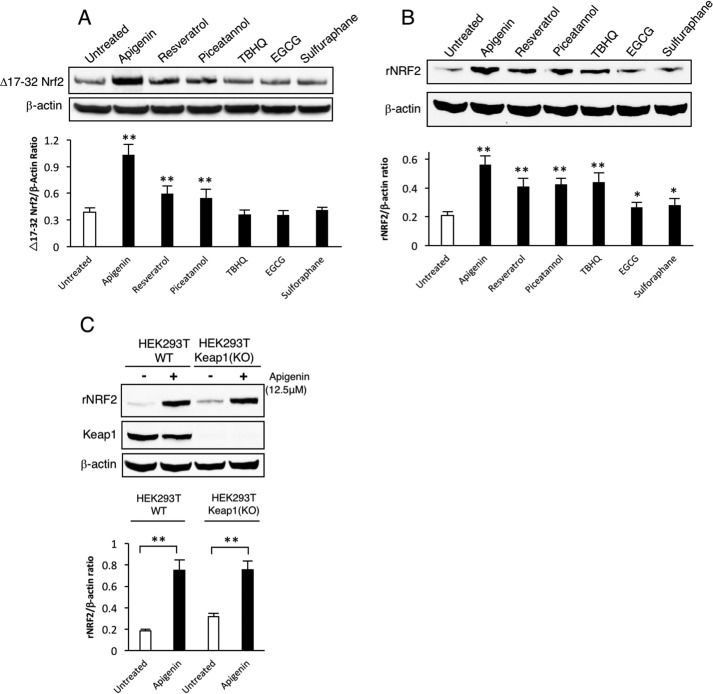Figure 4.
Apigenin increases the expression of Nrf2 independent of Keap-1. A, apigenin, resveratrol, and piceatannol promote an increase in the expression of the Keap1-resistant Δ17–32 Nrf2 in transfected HEK293T cells (n = 3). The statistical significance of the difference in the levels of expression of Δ17–32 Nrf2 in untreated versus treated cells is indicated by **, p < 0.01. Additionally, the effect on Nrf2 translation of TBHQ, EGCG, and sulforaphane was evaluated. B, apigenin also increases the expression of wild-type Nrf2 transfected into HEK293T cells. The effect of well-known inhibitors of the Keap1/Nrf2 interaction (TBHQ, EGCG, and sulforaphane) was also compared against apigenin (n = 3). The statistical significance of the difference in the levels of expression of wild-type Nrf2 in untreated versus treated cells is indicated by **, p < 0.01, or *, p < 0.05. C, apigenin increases the expression of recombinant WTNrf2 in transfected HEK293T cells independent of Keap1. The relative intensity of the Nrf2 band in all the Western blottings is represented as a ratio with β-actin as a loading control. The statistical significance of the difference in the levels of expression of Nrf2 in apigenin-treated versus untreated cells is indicated by **, p < 0.01.

